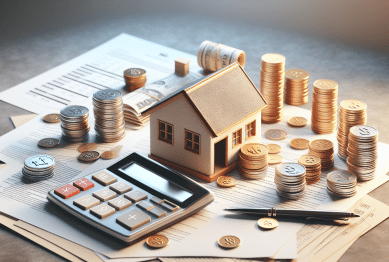Explore the surprising elements affecting home values beyond supply and demand. Discover how neighborhood trends, renovation choices, school access, and even local amenities can have an outsized impact on property pricing in the ever-evolving real estate landscape.
The Role of Neighborhood Trends in Home Value
Neighborhood character plays a big part in shaping property values. It’s not just the houses themselves, but the overall vibe—tree-lined streets, mixed-use zoning, and walkability features that buyers crave. These aspects attract residents who want convenience and comfort close at hand. Real estate observers have long noted that when neighborhoods improve their accessibility to shops, parks, or public transit, home prices respond positively (https://www.nar.realtor/research-and-statistics).
There’s more to it than surface appearances. Safety perceptions can change how buyers feel about a place, even when real crime rates stay the same. Minor tweaks—like new streetlights, thoughtful landscaping, or well-maintained sidewalks—signal community investment. These upgrades tell potential buyers this is a vibrant, well-cared-for area. As a result, such improvements can shift the median property value and boost real estate appreciation over time.
Another significant element is amenities. Popular additions—think playgrounds, dog parks, or weekend farmers markets—often spark increased homebuyer interest. Even a splash of public art or creative placemaking efforts can raise a neighborhood’s profile. Tech-enabled conveniences, such as Wi-Fi-equipped parks or shared workspaces, have also begun to sway real estate values, especially in cities prioritizing digital infrastructure. Neighborhood momentum develops its own pricing force—a subtle but powerful driver in today’s housing market.
School Access and Its Surprising Impact
Schools shape more than just education—they’re a backbone of the community. Homebuyers consistently rate proximity to highly rated schools as ‘very important’ in the National Association of Realtors’ annual surveys. Even for those without children, living near a coveted school catchment can mean significant increases in home value. School district boundaries can create noticeable price divides even between adjacent blocks (https://www.ed.gov).
This effect isn’t limited to public schools alone. Access to specialized programs, charter institutions, or magnet academies feeds demand for homes in their service zones. When a district earns awards or positive state performance scores, sellers often leverage this in their listings—leading to bidding competition and higher final sale prices. Appraisers sometimes use school quality as a variable, further tying neighborhood school ratings to property search outcomes.
There are less obvious influences, too. The culture of involved school communities—volunteer groups, afterschool care, or weekend enrichment programs—makes a place feel family-friendly. This enhances the sense of security and stability, which can attract long-term buyers. In dynamic markets where quality schools are scarce, ripple effects can make homes in those zones especially difficult to find, adding another layer to demand-driven price increases.
Renovation Choices That Surpass Expectations
Home upgrades are not created equal. Kitchens and bathrooms are legendary for their influence on selling price, but the story doesn’t end there. Thoughtful renovations—like energy efficiency upgrades, flexible work-from-home spaces, or smart home features—are winning over buyers who want both comfort and modern convenience. These upgrades can change a buyer’s perception and willingness to pay more than expected (https://www.energy.gov/eere/buildings/articles/building-energy-efficiency-homeowner-resources).
Many subtle renovation tweaks now matter just as much as dramatic overhauls. For example, updating insulation or HVAC systems appeals to eco-conscious buyers. Adding multi-generational living options, like in-law suites or adaptable floor plans, reflects shifting lifestyles. This flexibility often makes a home stand out in property searches that filter by modern amenities. Creative landscaping or adding usable outdoor living space can also spark higher offers—especially in regions with year-round pleasant weather.
But not every improvement ensures a high return. The value of a swimming pool, for example, depends heavily on local climate and buyer preferences. Overly personalized renovations—such as wild color choices or elaborate built-ins—can limit appeal and actually prompt lower offers. Understanding which updates appeal to the widest range of buyers is key for homeowners looking to maximize return on investment. Data-driven decisions about home improvements remain central to home pricing strategies.
Hidden Influences: Environmental and Regulatory Factors
Natural elements can influence home values in subtle ways. Water views, proximity to parks or green spaces, and even noise levels from transportation corridors play a role. These factors sometimes create micro-markets within neighborhoods, with premiums attached to views, sunlight, or even lush mature trees. Likewise, environmental concerns—ranging from flood risk zones to soil stability—can significantly affect sale prices (https://www.epa.gov/communityhealth).
Local regulations can also have a sizable impact. Zoning changes, new housing ordinances, or restrictions on short-term rentals may shift both supply and demand. Permit requirements for renovations or the presence of historic preservation overlays can increase a property’s marketability or, conversely, add barriers that discourage buyer interest. Keeping updated on local council plans and new legislation is a practical way for buyers and sellers to anticipate pricing shifts.
The drive toward sustainability and environmental certification adds another dimension. Solar panels, high-efficiency windows, and stormwater management features are becoming recognized in appraisal calculations. Programs such as ENERGY STAR and LEED are increasingly referenced in property marketing, rewarding homeowners who invest in green upgrades. These elements, while once niche, are now changing expectations for new and existing homes alike, further impacting price trends.
Housing Market Sentiment and Economic Context
Beyond bricks and mortar, pricing reflects broader economic signals. Interest rates, employment trends, and tax policy each influence homebuyer sentiment. When mortgage rates are low, affordability expands and more people can enter the housing market, raising demand and, thereby, prices. Conversely, job uncertainty or tightening credit can swiftly cool buyer enthusiasm—even when the supply of available homes hasn’t changed (https://www.federalreserve.gov/consumerscommunities.htm).
Public perception, sometimes fueled by media headlines, is another potent force. News about soaring home prices, changing urban appeal, or new remote work possibilities can spark buying waves. This collective psyche affects the speed at which properties move and at what price point. Sellers benefit by understanding current trends and aligning marketing strategies accordingly, sometimes even adjusting asking prices in response to buyer sentiment.
Other financial considerations loom large in buyer decisions. Local property taxes, insurance costs, and expected maintenance expenses all factor into what someone is willing to pay. Incentives, rebates, or assistance programs offered by city or state agencies can further tip the balance. Taking the economic ‘temperature’ of a specific market often unearths these influences, offering clues for both new and experienced homebuyers alike.
How Technology and Data Shape Property Values
Technology has revolutionized the way buyers and sellers approach home valuation. Automated online appraisal tools, virtual open houses, and machine-learning-powered real estate platforms allow users to analyze price trends quickly. These platforms integrate data on nearby schools, public amenities, crime rates, and neighborhood changes, creating richer property profiles (https://realtor.com/research).
Real estate data portals now serve as more than just listing platforms. Potential buyers use map-based search filters to compare commute times, broadband access, or even retail options nearby. These search habits help shape what buyers are willing to pay for added conveniences and enable sellers to price properties more strategically. Transparency and access to information are raising expectations across the sector, often leading to more competitive markets.
Finally, digital transaction tools and e-signatures have streamlined real estate deals, speeding up the closing process. Predictive analytics even try to forecast price changes before they hit the market. As the industry adopts more innovations, both subtle and obvious factors influencing home prices are likely to become more visible and actionable for everyone involved in a property transaction.
References
1. National Association of Realtors. (n.d.). Research and Statistics. Retrieved from https://www.nar.realtor/research-and-statistics
2. U.S. Department of Education. (n.d.). Public School Search. Retrieved from https://www.ed.gov
3. U.S. Department of Energy. (n.d.). Building Energy Efficiency Homeowner Resources. Retrieved from https://www.energy.gov/eere/buildings/articles/building-energy-efficiency-homeowner-resources
4. U.S. Environmental Protection Agency. (n.d.). Community Health and Homes. Retrieved from https://www.epa.gov/communityhealth
5. Federal Reserve Board. (n.d.). Consumers & Communities. Retrieved from https://www.federalreserve.gov/consumerscommunities.htm
6. Realtor.com. (n.d.). Research & Insights. Retrieved from https://realtor.com/research









